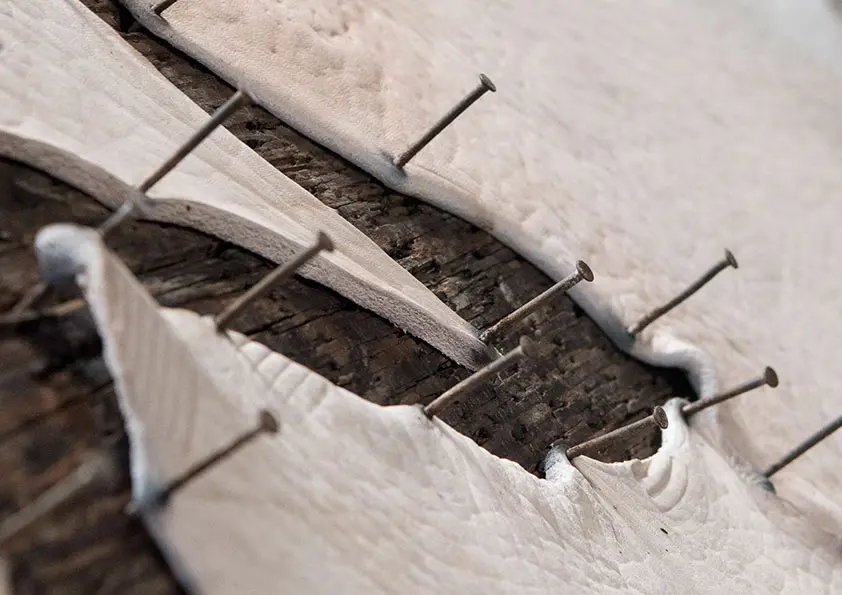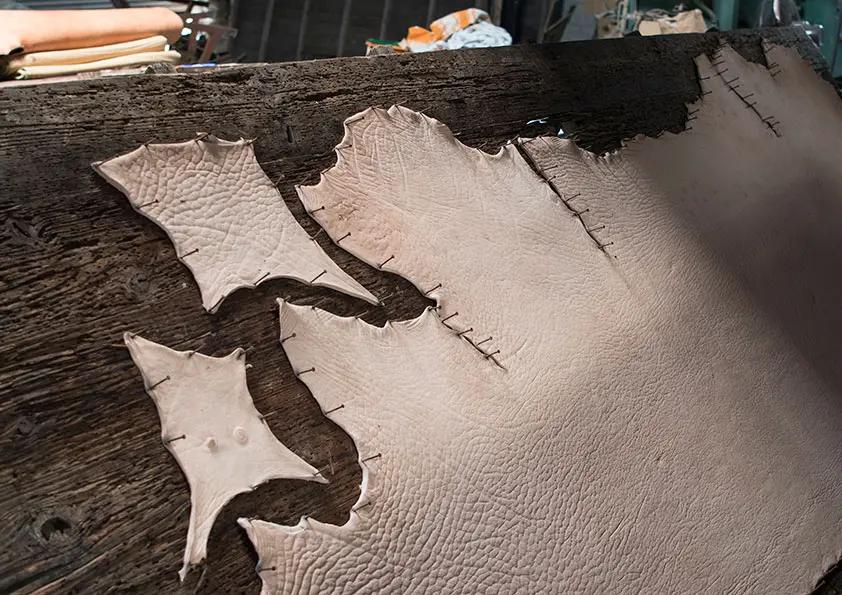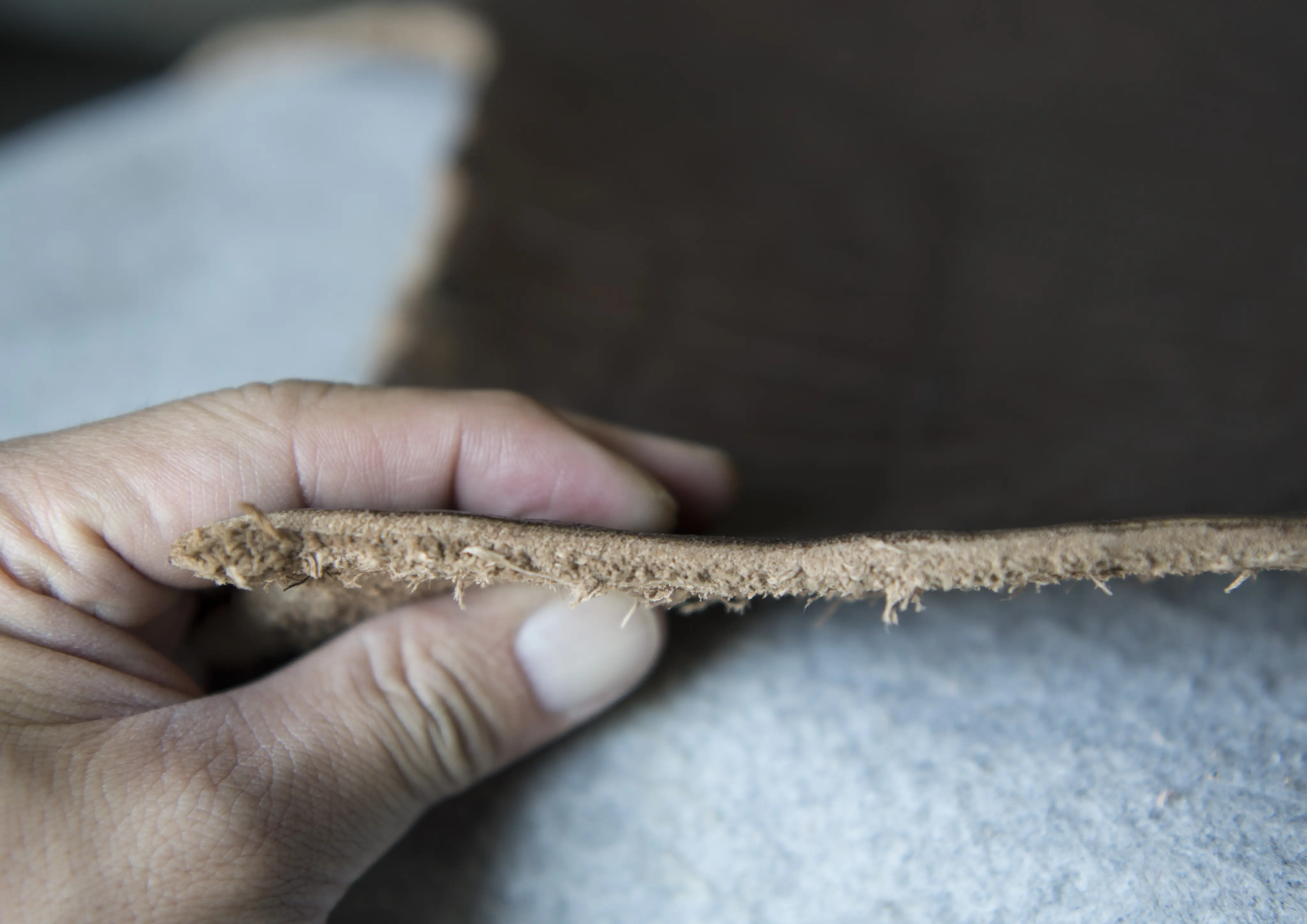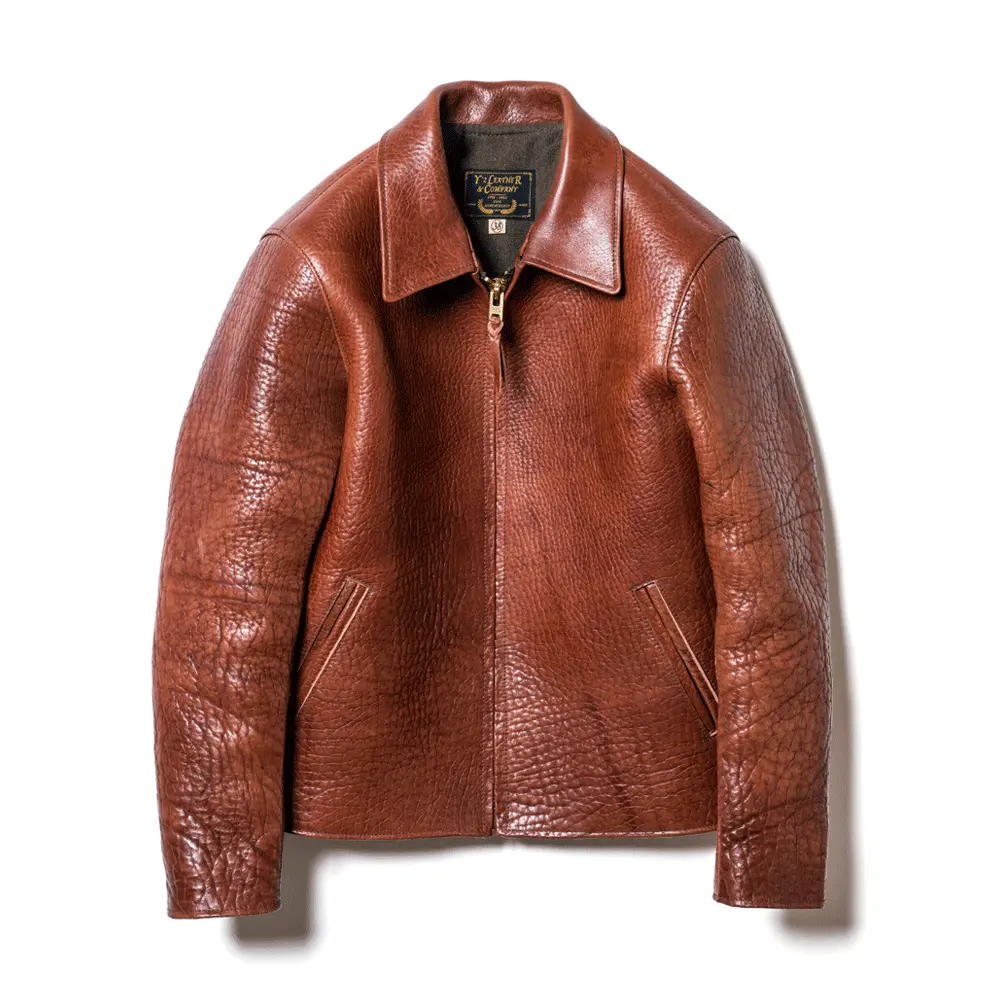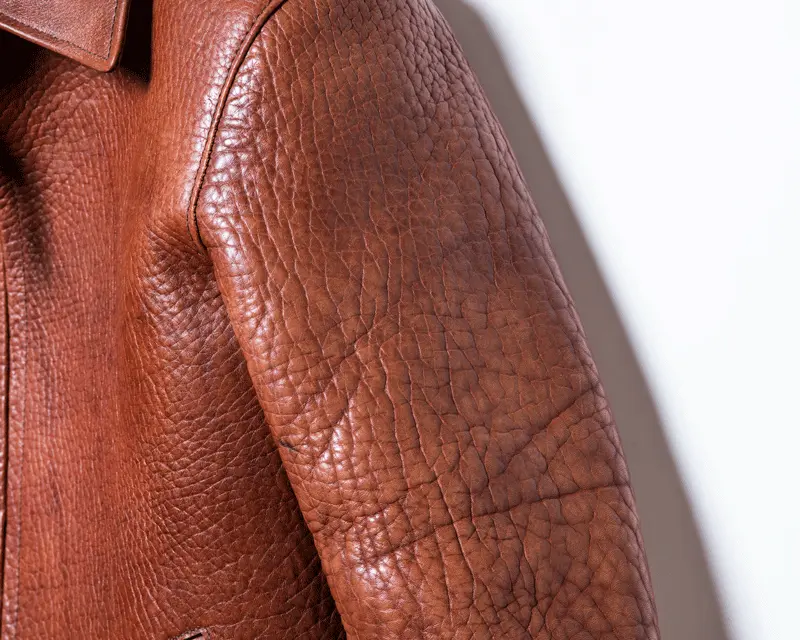2023.04.21
Challenge from the BULL HIDE (1)
Many of you may not understand what I mean by the title.
I myself don't know what it means.
I am writing this while thinking about it.
This season marks our 25th anniversary.
This is a dress that can only be made in the anniversary year.
Or rather, in a good sense, what is the one dress that you don't want to make even in the anniversary year?
I have been having a fantasy for a few years now that I don't even know what it means.
Then, when I went to Himeji to prepare leather for boots, I saw a scene.
I must have seen it many times, but I was surprised to see it again.
This is the first picture.
Usually, leather is hung to dry like a clothespin.
However, this leather is too heavy to hang, so the traditional method of drying it with nails is used.
The leather is also thick, so it takes a long time just to dry one piece.
This is what I was fantasizing about.
Boots are nice, but it's still a leather jacket.
I remember my elementary school son was more excited than I was when he got his first Nintendo Switch and was very impressed.
However, the opponent was bullhide, a strong enemy of more than 5 mm.
At first, I tested how many millimeters I could cut and sew.
Eco hose is around 2mm.
I started with 2.5 mm for the time being, because the thicker part would be 2.3 mm or so.
We carefully selected a sewing place and left it to a craftsman who is good at sewing eco-horse.
The leather is thick, but in a good sense, I am used to sewing with eco-horse, so the pitch of the sewing machine is stable.
We decided to use "3mm", which is a good number, and made a sample.
Since this leather is usually thicker than 5mm, we added a process called "splitting" to thin the leather without changing the thickness of a single piece of leather.
This process makes no difference in the thickness of the leather and stabilizes the thickness to 3mm.
Steer oil 0.8mm and Eco-horse 1.3mm are the same, but instead of starting with the same thickness, they are made thicker and thinner to the desired thickness.
thicken it and thin it to the desired number.
This way, the leather will firmly absorb 5mm of "tannin" and "oil".
Even if you split it into 3mm, it still looks like 5mm with a rough atmosphere.
The finished 3mm bullhide is then cut, strained, and sewn, but there are some difficulties in each process.
I will explain them in the next article, "Challenge from BULL HIDE (2)".
I saw the corrected sample, and the leather that was a little prone to cracking has been improved considerably.
Due to the special finishing and process, Bullhide only finishes 12 pieces of leather in a month.
The tannery informed us that the leather for the first mass production was finally ready.
I'm off to Himeji now with a feeling of excitement like a field trip.
The site comes first.

